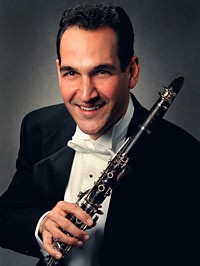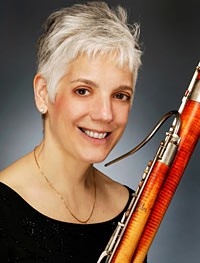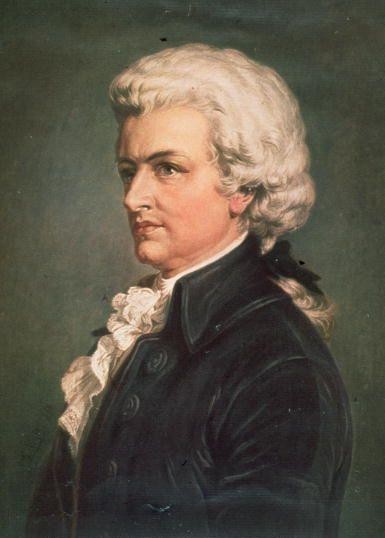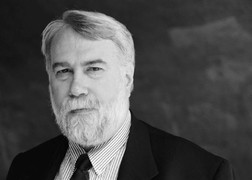Alan Gilbert Leads the New York Philharmonic
A Valentine from Composer Christopher Rouse
By: Susan Hall - Feb 14, 2010
Alan Gilbert ConductsThe New York Philharmonic
Avery Fisher Hall
Lincoln Center, New York
February 11, 2010
Mozart (attrib) Sinfonia Concertante in E flat major
Rouse, Odna Zhizn (A Life)
Mozart Symphony No. 41 in C major, Jupiter
The putative Mozart "Sinfonia Concertante" that opened the New York Philharmonic's program was lovely in conductor Alan Gilbert's hands. In this concertante, the winds are on glorious display. Gilbert wants us to get to know various instrumentalists in the orchestra, and the Mozart (?) featured special turns by four orchestra members. Liang Wang on the oboe levitated from his seat every time he had a solo phrase. Mark Nuccio shaped lines of incredible beauty on the clarinet. Philip Myers' horn gives as good a time as he clearly enjoys himself. The horn is often said to be the most difficult instrument to play, but its problems are never on display when Myers performs music so full of life and joy. Judith LeClair is masterful on the intimidating bassoon.
Mozart's mother, who accompanied him as he concertized around Europe, had just died, and pieces composed at about the same time as this one are considered the beginning of his post-maternal maturity.
In both the perhaps-Mozart sinfonia and the magisterial "Jupiter," I was struck yet again by Gilbert's conducting style. He is tidy, but never prim. If he takes liberties, they are in the dynamics. Under his baton, the orchestra swells and ebbs. This happens not only in the longer phrases, but in shorter bites. The effect is of music that is breathing. Gilbert has that quality most prized in conductors: when you hear a piece he conducts, it is new and fresh. Even a warhorse is re-discovered.
The centerpiece of the evening was a world premiere, a newly-minted love letter for Valentine's Day. The Philharmonic commissioned "Odna Zhisn, A Life" from one of America's pre-eminent composers Christopher Rouse. Rouse's wish to connect with the audience is clear in his composition. He never traps us in an intellectual construct that falls flat.
This evening's composition is a very personal piece for Rouse. The music evokes his friend Natasha's difficult childhood, tortured early adulthood, and now present joy, the three sections of the composition.
Rouse has deployed German notation, which uses all the letters of the alphabet. When music started being notated, using seven letters of the alphabet to indicate notes which come before the first overtone repeat may seem a no brainer today. Yet others over time have devised systems which use the entire alphabet, A blind man Paulmann lettered frets instead of strings and succeeded in incorporating the entire alphabet, which Virdung explained in 1511. A system somewhat like this was used by Rouse so he could write a letter in notes.
The harsh interruptions of the brass sometimes sounded like two notes were playing at once, a tone and its far too near neighbor. The effect is as jarring as the strident emotion Rouse wishes to convey. Yowls rise from cellos brushing across their strings, and a few yelps come from the brass. The middle portion is a cry of pain yielding to hope and tenderness in the third part.
Natasha's name is spelled throughout, F-A-D-A-Eflat-B-A, sometimes in a melodic line and sometimes as an 'accompaniment' vertically expressed. When the composer enters Natasha's life, we hear his name, C-B-Bflat-A-Aflat. While the construct sounds cold, it is warm in the listening. You don't have to de-code the message to get it. Because all music that leaves overtones in the dust is arbitrary, how we receive it depends on what we choose to hear as the composer speaks.
If Rouse picks a word whose sound is not the meaning he wishes to convey, he changes the word. Words and messages abound in the composition and Rouse packs a wallop with these note-words, both lovely and raw.
There are many enchanting small touches in the composition. An unfamiliar swish from the back of the orchestra may have come from a wire brush, often used by percussionists. One was waving in the air. The percussions, which Rouse knows best of all, bind the string and wind sections in "Odna Zhisn: A Life."
As personal as this composition is, it is big and bold. Rouse thinks big and hears big. He is a member of an old Baltimore family which undertook projects of large scale, like building a new city from scratch. Big must be in the Rouse blood.
The real Natasha is as light, delicate and beautiful in person as she is in the music. In the audience, appreciative listeners who did not know the romantic back story responded to beauty of the musical lines and the charm of the harp and bells.
When I ran into the composer in Lincoln Center Plaza a day after the concert, he confirmed that I had heard the word L-O-V-E.
"A Life" is part of this choice program which will be repeated on Tuesday, February 16 at 7:30 pm. 212-721-6500 or nyphil.org.







